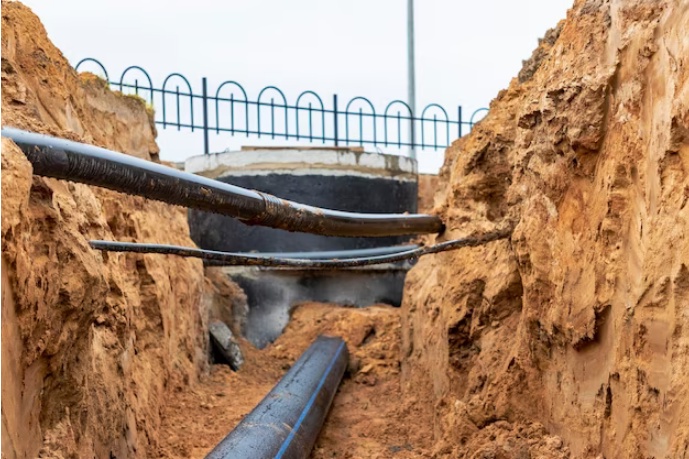Urbanization is progressing at an unprecedented pace worldwide, leading to various environmental challenges, including inadequate stormwater management and increased risk of flooding. In response to these challenges, the adoption of sustainable drainage strategies has become a fundamental aspect of urban planning and development. This guide aims to explore the core principles and strategies that underlie sustainable drainage strategy and how they can address the issues associated with traditional urban drainage systems.
The Need for Sustainable Drainage Strategies
Before delving into the specifics of sustainable drainage, it is important to understand why traditional urban drainage systems are inadequate for our current needs. Conventional systems, often consisting of impervious surfaces like concrete and asphalt, lead to several problems:
-
Flooding: Traditional systems are designed to quickly transport stormwater away from urban areas through underground pipes. However, during heavy rainfall, these systems can become overwhelmed, leading to flash floods. The rapid runoff also prevents water from naturally replenishing local aquifers.
-
Water Pollution: Stormwater runoff from roads and paved surfaces can carry pollutants such as oils, heavy metals, and chemicals into rivers and streams, thereby degrading water quality and posing risks to aquatic life and human health.
-
Erosion: High-velocity runoff from impervious surfaces can cause soil erosion, negatively impacting the stability of riverbanks and waterways.
-
Loss of Biodiversity: The proliferation of concrete and asphalt surfaces reduces natural vegetation and green spaces in urban areas. This loss of biodiversity has a detrimental effect on local ecosystems.
-
Urban Heat Island Effect: Impervious surfaces absorb and radiate heat, contributing to the urban heat island effect. This phenomenon raises temperatures in urban areas, increasing energy consumption for cooling and reducing overall comfort for residents.
Core Principles of Sustainable Drainage
Sustainable drainage strategies seek to address these challenges by embracing several key principles:
1. Mimicking Natural Processes:
Sustainable drainage systems aim to mimic the natural water cycle as closely as possible. They encourage the slow and gradual release of rainwater into the environment, allowing it to be absorbed by the ground, evaporate, or be transpired by vegetation. This approach helps maintain the balance of local ecosystems and minimizes the risk of flooding.
2. Managing Water at the Source:
Sustainable drainage strategies promote the management of rainwater as close to its source as possible. By capturing and treating rainwater where it falls, these systems reduce the pressure on traditional drainage infrastructure, making them more resilient during heavy rain events.
3. Utilizing Natural Features:
Sustainable drainage systems leverage natural features like vegetated swales, ponds, and wetlands to manage stormwater. These natural elements act as filters, removing pollutants, and replenishing groundwater resources. Furthermore, they provide habitat for wildlife, enhancing biodiversity in urban areas.
4. Infiltration and Permeability:
One of the fundamental principles of sustainable drainage is enhancing permeability. This involves designing surfaces and materials that allow water to infiltrate into the ground, effectively reducing surface runoff. Permeable pavements and gravel beds are examples of strategies used to facilitate infiltration.
5. Water Harvesting and Reuse:
Sustainable drainage encourages the collection and storage of rainwater for various purposes, such as landscape irrigation, toilet flushing, or industrial processes. This not only conserves potable water but also reduces the load on urban drainage systems.
6. Community Engagement:
Engaging the community is a crucial component of sustainable drainage. Encouraging local residents to participate in the planning, design, and maintenance of sustainable drainage elements fosters a sense of ownership and responsibility for the environment. Moreover, community involvement can lead to greater awareness of the benefits of sustainable drainage.
Strategies for Implementing Sustainable Drainage
To put these principles into practice, a variety of sustainable drainage strategies and features can be incorporated into urban development. Here are some of the key strategies:
1. Green Roofs:
Green roofs involve planting vegetation on building rooftops. They provide numerous benefits, including reduced stormwater runoff, improved energy efficiency, and enhanced urban aesthetics.
2. Permeable Pavements:
Permeable pavements are designed to allow water to pass through the surface and be absorbed by the ground below. They are particularly effective in reducing surface runoff in parking lots and walkways.
3. Rain Gardens:
Rain gardens are depressions planted with native vegetation that capture and filter rainwater from rooftops or paved surfaces. They serve as attractive green features in urban landscapes while managing stormwater.
4. Swales:
Swales are shallow, vegetated channels designed to slow and filter stormwater. They are effective in reducing erosion, removing pollutants, and enhancing groundwater recharge.
5. Infiltration Basins:
Infiltration basins are designed to capture and store rainwater, allowing it to slowly infiltrate into the ground. They are commonly used to manage stormwater in residential areas.
6. Constructed Wetlands:
Constructed wetlands mimic natural wetland ecosystems and are effective at treating and managing stormwater. They provide habitat for wildlife and improve water quality.
Conclusion
Sustainable drainage strategies represent a fundamental shift in urban planning and development, aiming to address the shortcomings of traditional drainage systems. By embracing core principles such as mimicking natural processes, managing water at the source, utilizing natural features, and enhancing permeability, sustainable drainage systems offer numerous benefits.
These strategies not only mitigate the risk of flooding and water pollution but also promote biodiversity, reduce the urban heat island effect, and engage the community in environmental stewardship. The implementation of sustainable drainage features like green roofs, permeable pavements, rain gardens, and swales has the potential to transform our urban landscapes into more resilient, eco-friendly, and livable spaces.


No comments yet